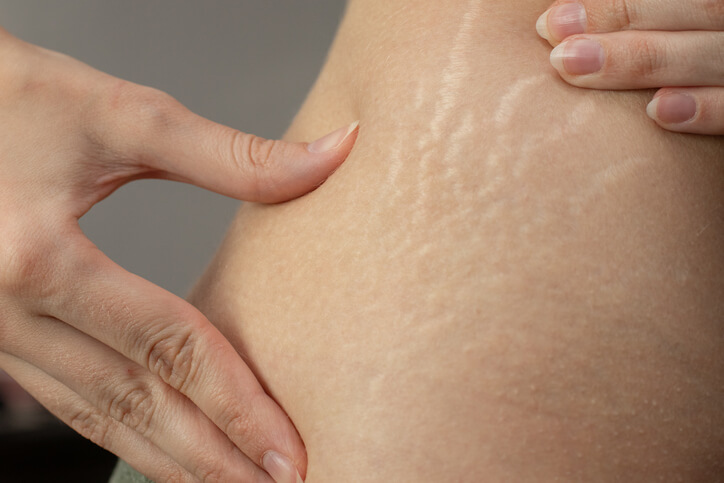Do you struggle with the appearance of stretch marks on your thighs, stomach, or hips? Stretch marks are one of the most common cosmetic concerns among people of all ages. While stretch marks are physically harmless, many people find theirs unflattering and aesthetically displeasing.
Cohen Plastic Surgery in Nassau County, NY, provides various cosmetic treatments that can help reduce the appearance of stretch marks. Continue reading to learn more about the causes of stretch marks and which treatments can remove them once and for all.
What Are Stretch Marks?
Stretch marks are the bands of parallel lines that often appear on the skin after fluctuations in weight. They range in color from purple, white, bright pink, or gray. These lines will often appear a different texture from the rest of your skin, and you may feel a slight ridge or indent when running your hand over them.
Stretch marks often appear on the following areas of the body:
- Stomach
- Hips
- Thighs
- Buttocks
- Flanks
- Breasts
- Arms
In most cases, stretch marks are not painful or uncomfortable. Some patients may experience itchiness around their stretch marks.
What Causes Stretch Marks?
Several factors can lead to the development of stretch marks. The first is pregnancy-related weight gain.
Weight gain and skin-stretching during pregnancy can lead to stretch marks on various body areas, such as the abdomen, buttocks, hips, and thighs.
Another common cause of stretch marks is rapid weight gain or weight loss. When weight gain does not occur gradually, the rapid stretching of the skin can result in stretch marks. The same applies to weight loss which happens very rapidly. After losing a significant deal of weight, many patients find they are left with stretch marks around the stomach, thighs, hips, and buttocks.
Some people are under the impression that stretch marks occur with age, but they can happen at any age. Teenagers can even experience stretch marks, often caused by the growth spurt during puberty.
In some cases, stretch marks result from an underlying medical condition. Patients with connective tissue disorders like Ehlers Danlos Syndrome or Marfan Syndrome can experience stretch marks. These disorders cause the skin to be extra stretchy, making stretch marks more likely to develop.
Certain adrenal gland disorders, including Cushing’s Syndrome, can also cause stretch marks. This is due to an increased amount of cortisone in the body.
Removing Stretch Marks
If you find yourself struggling with stretch marks, you’re likely looking for ways to get rid of them permanently. The following are some effective treatments for reducing the appearance of stretch marks:
Microneedling
Microneedling is a cosmetic procedure that uses ultrafine needles to make micro-sized punctures in the skin. These punctures penetrate deeply into the skin, stimulating a healing response in the skin.
This healing response can generate new skin growth that diminishes the appearance of scarring and stretch marks.
Scar Revision
Scar revision procedures can remove stretch marks from the body in various ways. In some cases, doctors may perform skin grafting, which involves harvesting smooth, clear skin from another body area and using it to replace the skin with significant stretch marks.
Skin grafting is typically for areas with large, deep stretch marks.
Fractional Laser Therapy BBL Laser
Fractional laser therapy is an option at some cosmetic clinics and medical spas. This innovative aesthetic treatment uses laser energy to penetrate deep into the skin, making changes at the cellular level through microscopic injuries in the skin. Much like how microneedling works, this laser treatment triggers the body’s healing response and diminishes the appearance of stretch marks throughout the body.
BBL Laser
BBL laser is another laser option. If your concern is the pigmentation or redness of the stretch marks BBL Laser uses a light energy to penetrate deep into the skin to correct the pigment. Contact our office today to discuss your options.
